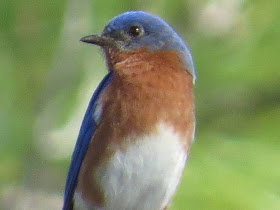Sunday March 19th
 |
White-tailed Deer
|
The Babcock-Webb property is basically mesic pine flatwoods which hosts three bird species of concern including the Red-cockaded Woodpeckers, Brown-headed Nuthatches and Bachman's Sparrow. Of these three birds the Bachman's can be the most difficult to spot due to its more secretive manners. However, from March into May the males will post itself on a low limb and sing its heart out. This is why I had traveled to this spot today, to look for some Bachman's.
I arrived at dawn and was rewarded with a pair of Bachman's in song. Couldn't get a photograph as they still proved hard to locate. Also singing this morning were a number of Eastern Towhees, Pine Warblers, Northern Cardinals, Eastern Meadowlarks and Northern Bobwhites.
 |
| Eastern Bluebird |
 |
| Green Heron |
 |
| Pine Warbler |
 |
| Thistle |
 |
| This Limpkin has collected a fresh-water muscle |
 |
| Pine Warbler |
Within the first hour I had been successfully in finding the Big Three, but was able to add, a Great Horned Owl, Yellow-rumped Warblers, Common Yellow-throat, Mockingbirds, House Wrens, Palm Warblers, Limpkins, Great Egrets, Eastern Bluebirds, Anhingas, Osprey, Pileated Woodpeckers, Downy Woodpeckers, Red-bellied Woodpeckers, Grey Catbirds, Eastern Phoebes, a Great Crested Flycatcher, Northern Flickers, Wilson's Snipe and Tree Swallows.
 |
| An Eastern Towhee |
 |
| Pine Warbler |
 |
| Pine Warbler |
 |
| Red-winged Blackbird showing-off his chevrons |
 |
This section at, Babcock-Webb, had recently been subjected
to a cleansing prescribed-burn
|
 |
| Great Crested Flycatcher |
 |
| Great Crested Flycatcher |
 |
| A Gator laying in wait |




























































